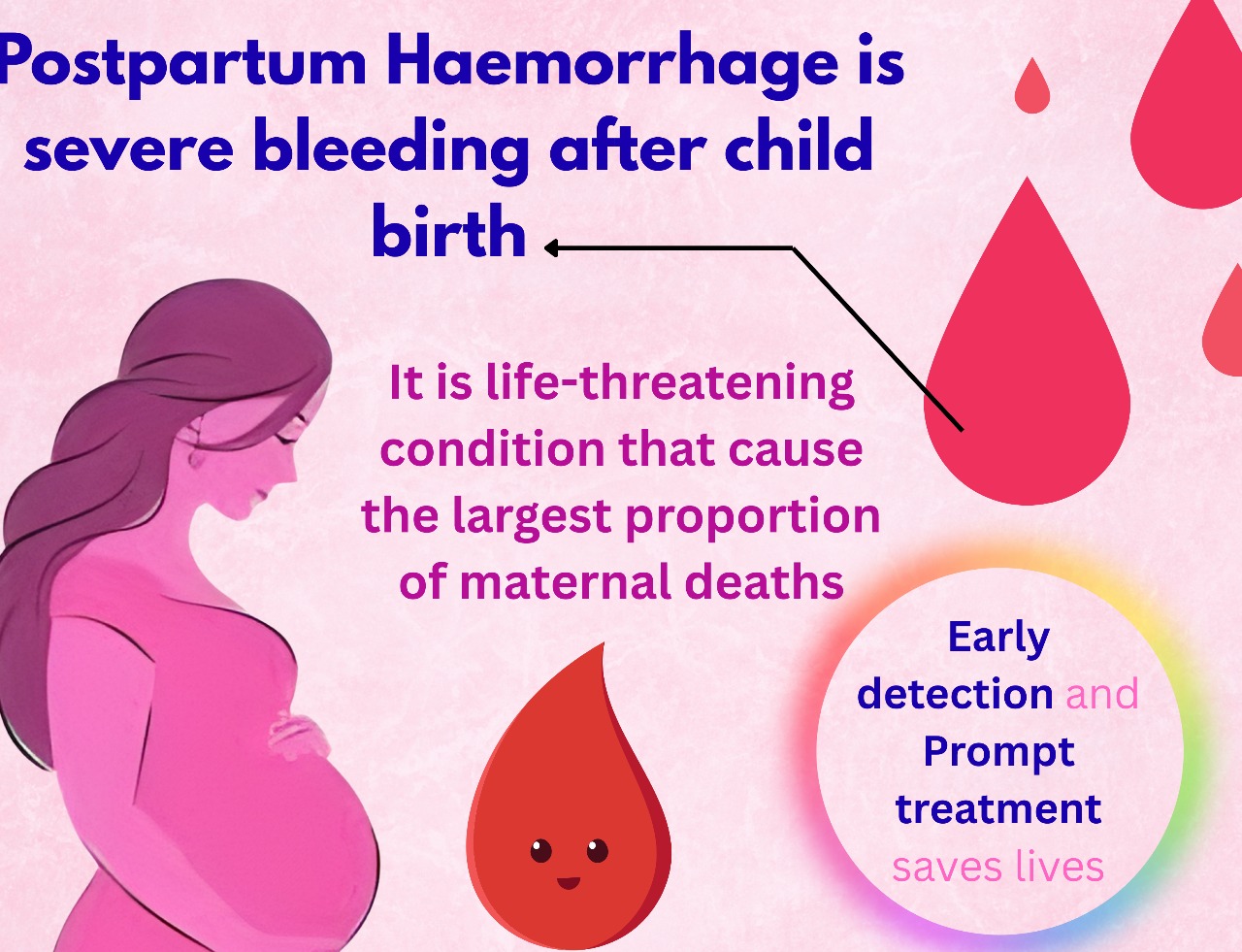Overview-
Postpartum haemorrhage (PPH) is defined as excessive bleeding after childbirth, exceeding 500 mL following vaginal delivery or 1000 mL after cesarean section. It remains a leading cause of maternal mortality worldwide.
Introduction
Maternal mortality remains a significant global health challenge, with PPH accounting for up to 25% of maternal deaths. Early recognition and prompt intervention are essential to prevent severe complications.
What is Postpartum Haemorrhage?
PPH occurs when blood loss exceeds:
- 500 mL after vaginal delivery
- 1000 mL after cesarean section
It is classified into:
- Primary PPH: Occurs within the first 24 hours after delivery
- Secondary PPH: Occurs between 24 hours and 12 weeks postpartum
Etiology
The causes of PPH are summarized under the “Four T’s”:
- Tone: Uterine atony – the most common cause.
- Trauma: Birth canal injuries (vagina, cervix, perineum).
- Tissue: Retained placental tissue.
- Thrombin: Coagulation disorders, pre-existing or acquired.
Risk Factors
- Women at higher risk of PPH include those with:
- Multiple pregnancies (twins, triplets)
- High parity (many previous births)
- Prolonged or rapid labor
- Large fetus or excess amniotic fluid
- History of previous PPH
- Cesarean delivery Certain medications (e.g., oxytocin)
Clinical Features
- Excessive vaginal bleeding
- Pallor, hypotension, tachycardia
- Weakness, dizziness, syncope
- Abdominal swelling or pain (if internal bleeding occurs)
Management
1.Initial Stabilization:
- Ensure airway, breathing, and circulation
- Establish IV access and administer fluids/blood transfusion
2.Medical Therapy:
- Uterotonics (oxytocin, misoprostol, ergometrine)
- Tranexamic acid to reduce bleeding.
3.Mechanical/Surgical Intervention:
- Uterine massage
- Balloon tamponade for severe bleeding
- Surgical options such as uterine artery ligation or hysterectomy
4.Address Underlying Cause:
- Removal of retained placenta or membranes.
- Repair birth canal trauma.
- Correction of coagulopathy
Prevention
- Active management of the third stage of labor (AMTSL)
- Routine administration of uterotonic drugs post-delivery.
- Close monitoring of high-risk mothers.
- Antenatal care addressing maternal anemia and other risk factors
Conclusion
PPH is a preventable but life-threatening condition. Timely recognition, effective management, and preventive strategies are crucial to reduce maternal mortality and improve outcomes.
Prognosis
The outcome of postpartum haemorrhage depends on early recognition and timely management. With prompt treatment, most women recover fully without complications. Delayed care, severe blood loss, or underlying health issues can lead to shock, organ failure, or rarely death. Long-term effects are uncommon but may include anemia, infertility, or psychological impact.
References
- World Health Organization. Postpartum Haemorrhage Fact Sheet, WHO, 2023.
- Cunningham FG, Leveno KJ, Bloom SL, et al. Williams Obstetrics, 26th Edition, McGraw-Hill, 2022.
- Say L, Chou D, Gemmill A, et al. Global causes of maternal death: a WHO systematic analysis. Lancet Glob Health. 2014;2:e323–e333.
- Cotter AM, Ness A, Tolosa JE. Prophylactic oxytocin for the third stage of labour. [review]. Cochrane Database of Systematic Reviews. 2001;4:CD001808.
- McDonald SJ, Middleton P, Dowswell T, et al. Effect of timing of umbilical cord clamping of term infants on maternal and neonatal outcomes [review]. Cochrane Database Syst. 2013;Rev7:CD004074.
- Begley CM, Gyte GM, Devane D, et al. Active versus expectant management for women in the third stage of labour. Cochrane Database Syst. 2011;Rev(11):CD007412.
- Geelhoed D, Visser L, Agordzo P, et al. Active versus expectant management of the third stage of labor in rural Ghana. Acta Obstet Gynecol Scand. 2002;81(2):172–173.






